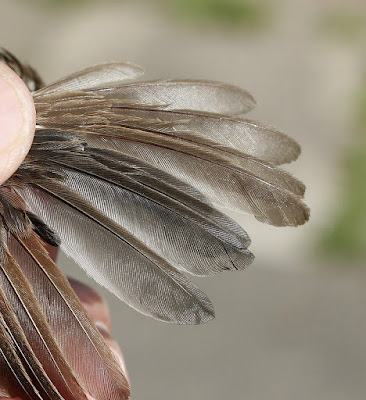Migration, the regular movement of birds and wildlife from one part of the world to another and back again is one of the wonders of the natural world. It’s a subject often discussed or referred to here on this blog when a post concerns the ringing of birds.
We know lots about bird migration, most of it gleaned through the ringing of birds, but there is still a great deal to learn. There are techniques developed in recent years which have the potential to add to our knowledge of how, when, where and why birds orientate and navigate. There are new and developing methods like data logging through radio tracking, radar observations or aural (listening). The physiological basis for bird migration has also received considerable attention, particularly the effects of seasonal increases and decreases in daylight and the seasonal rhythms that influence birds’ movements.
But now a new study shows that small birds migrating from Scandinavia to Africa in the autumn occasionally fly as high as 4,000 metres (about two and a half miles) above sea level - probably adjusting their flight to take advantage of favourable winds and different wind layers.
The study concerns two species I see at migration time each year in Menorca and Greece, May and September respectively – the Great Reed Warbler and the Red-backed Shrike.
The study concerns two species I see at migration time each year in Menorca and Greece, May and September respectively – the Great Reed Warbler and the Red-backed Shrike.
Red-backed Shrike
This is the first time that researchers have tracked how high small birds fly all the way from Sweden to Africa. Previous studies have successfully logged the flying height of larger migratory birds.
The aim of the study was to investigate whether the measuring method works on small birds, which involved measuring acceleration, barometric pressure (air pressure) and temperature throughout the flight using a small data logger attached to the bird.
A data logger was attached to two individuals of different species: Great Reed Warbler and Red-backed Shrike. Among other things, the results show how long it takes for each bird to fly to their destination. The measured barometric pressure showed that Great Reed Warbler occasionally flies at altitudes of up to 3,950 metres, while Red-backed Shrike flies at up to 3,650 metres. Both individuals flew the highest above ground across the Mediterranean Sea and the Sahara, but the shrike also reached high flight altitudes closer to its winter grounds in southern Africa.
Great Reed Warbler
Red-backed Shrike
"We only followed two individuals and two species. The fact that both of them flew so high does surprise me. It's fascinating and it raises new questions about the physiology of birds. How do they cope with the air pressure, thin air and low temperatures at these heights?," says Sissel Sjöberg, biologist at Lund University and the Zoological Museum in Copenhagen.
Both individuals flew the highest above ground across the Mediterranean Sea and the Sahara, but the shrike reached higher flight altitudes closer to its winter grounds in southern Africa.
Sissel Sjöberg thinks it is likely that other small birds fly as high, maybe even higher. But there is no evidence of that yet.
"In this study, we only worked with data collected during the autumn, when the small birds migrate to Africa. There are other studies that indicate that the birds fly even higher when they migrate back in the spring, but we cannot say for sure."
There's one thing for sure. The next time I see those two species, I will think of them in a new light and try to imagine them heading to and from Africa two and a half miles above me. Up there - somewhere in the sky.
Journal Reference: Barometer logging reveals new dimensions of individual songbird migration. Journal of Avian Biology, 2018.
Linking today to Eileen's Blogspot.
Linking today to Eileen's Blogspot.




















































.jpg)












